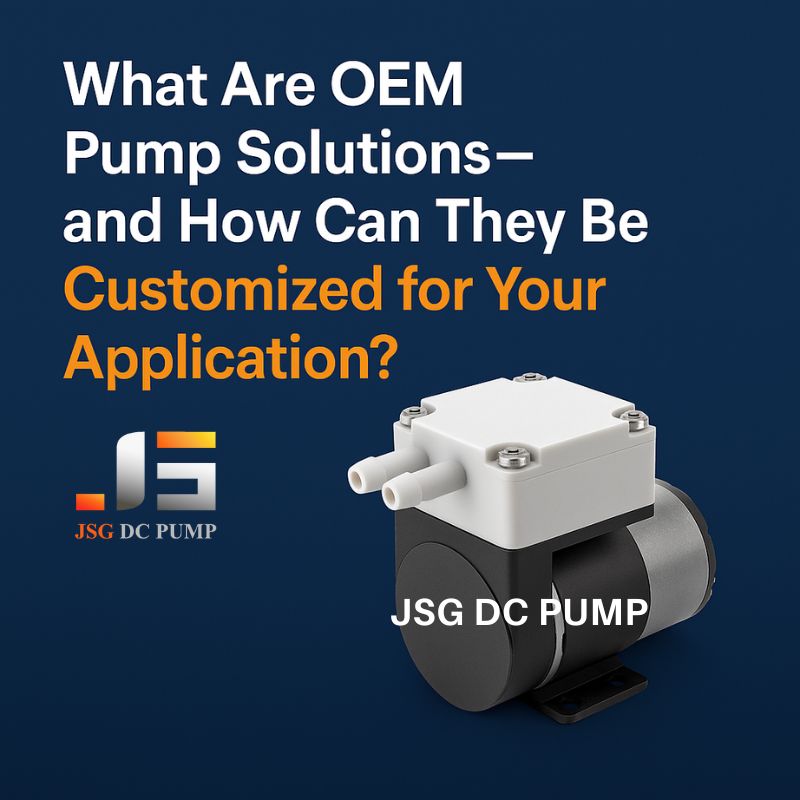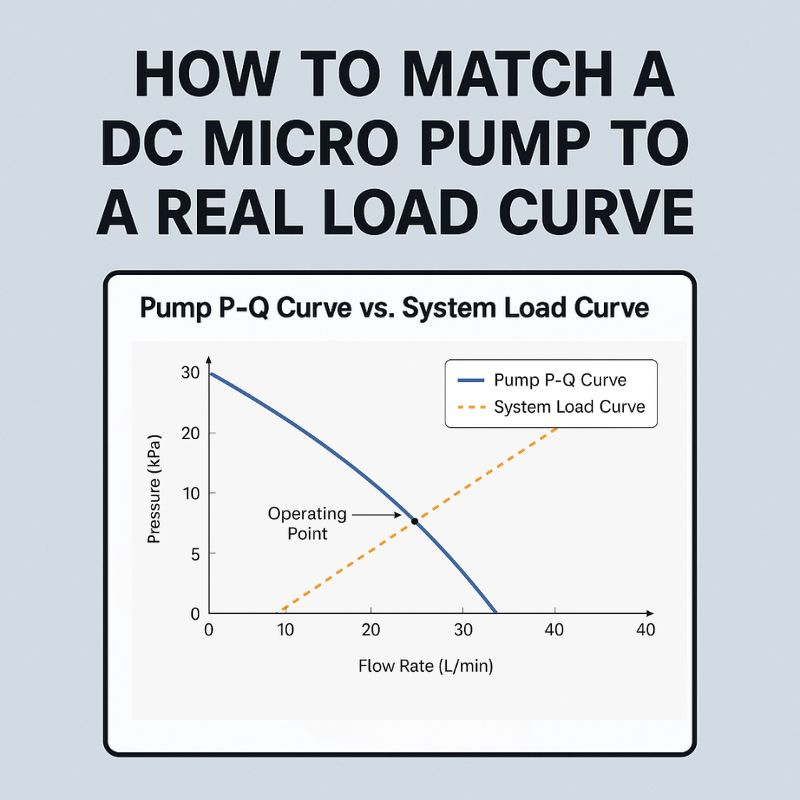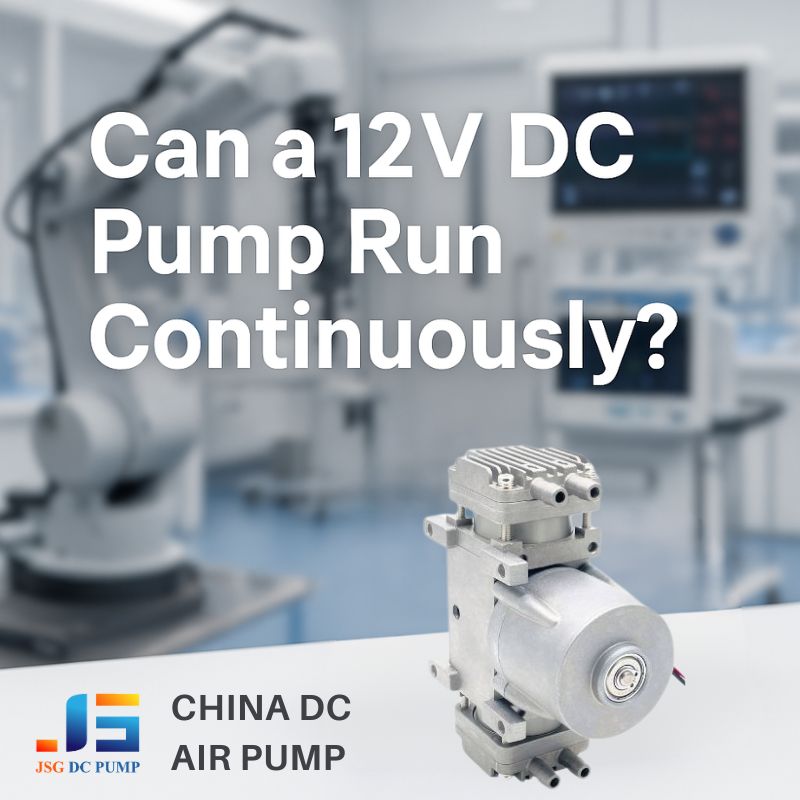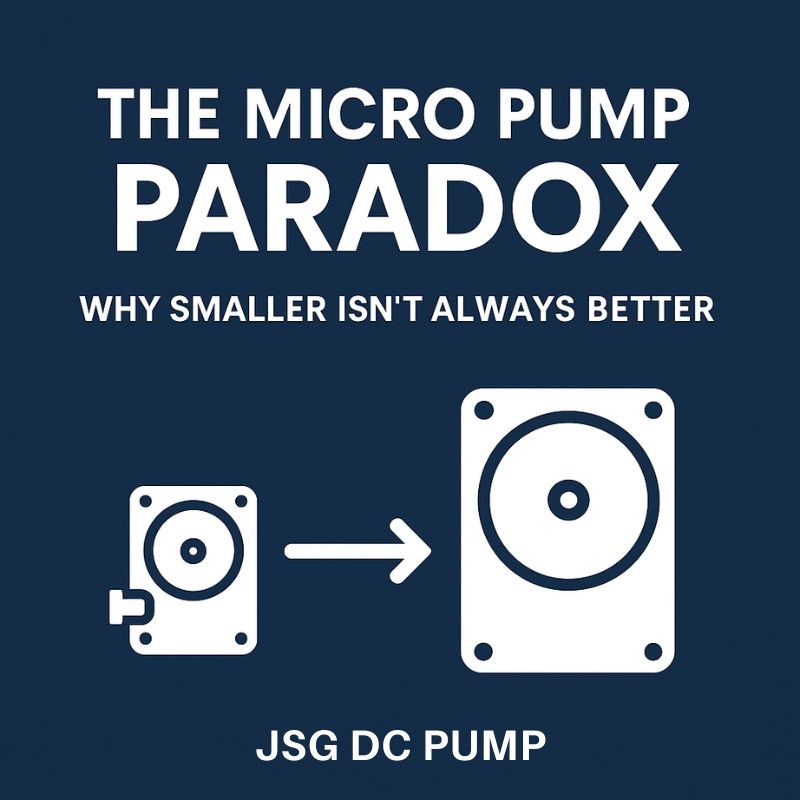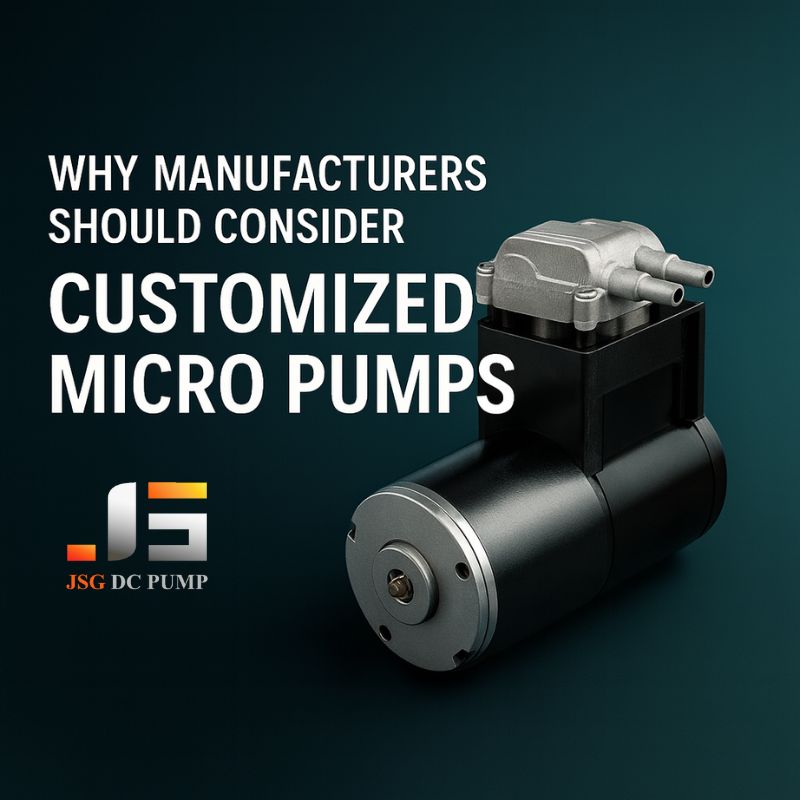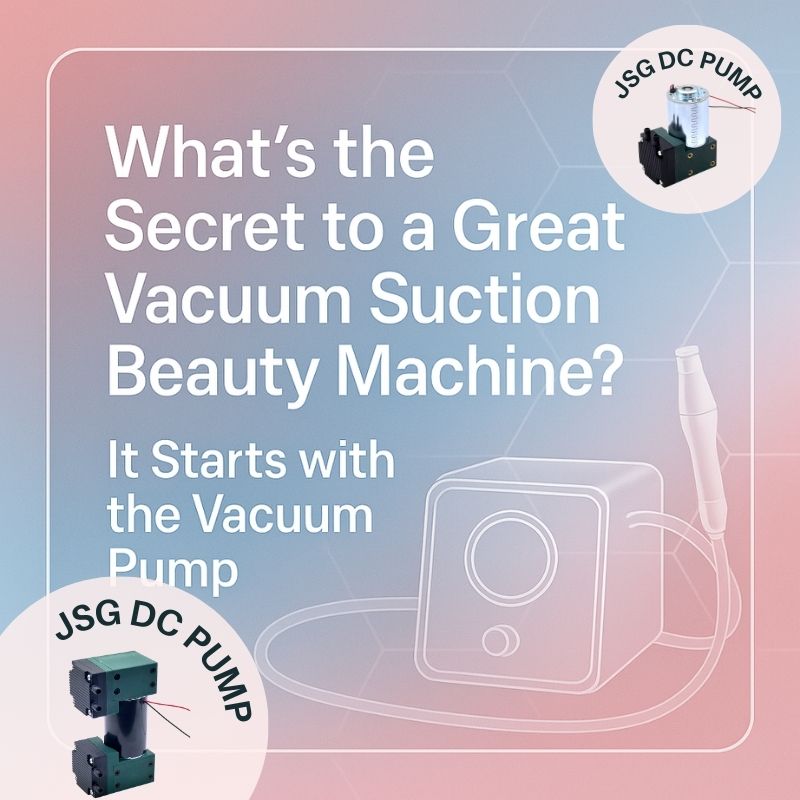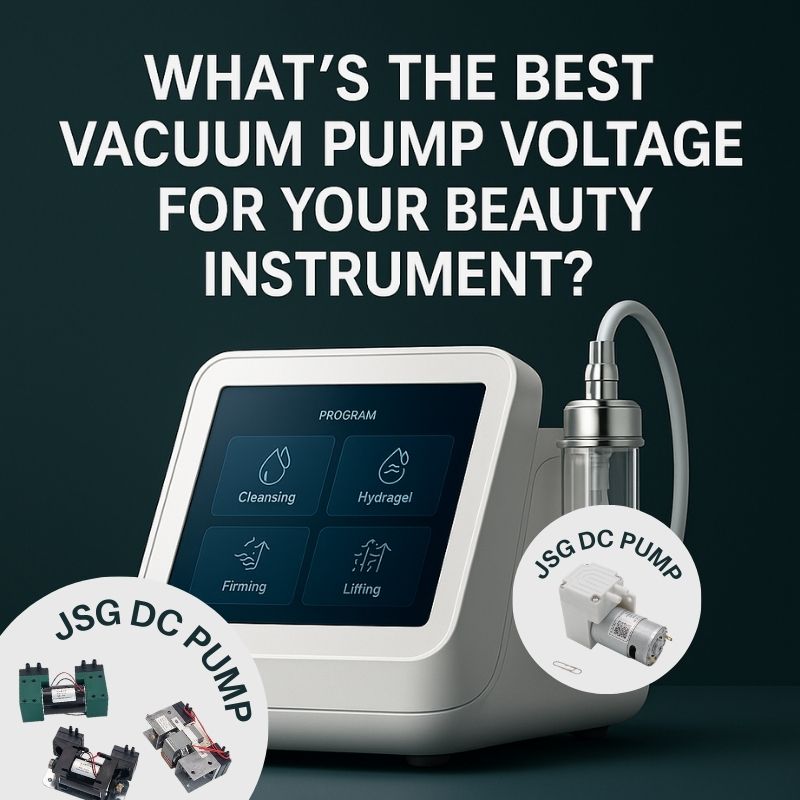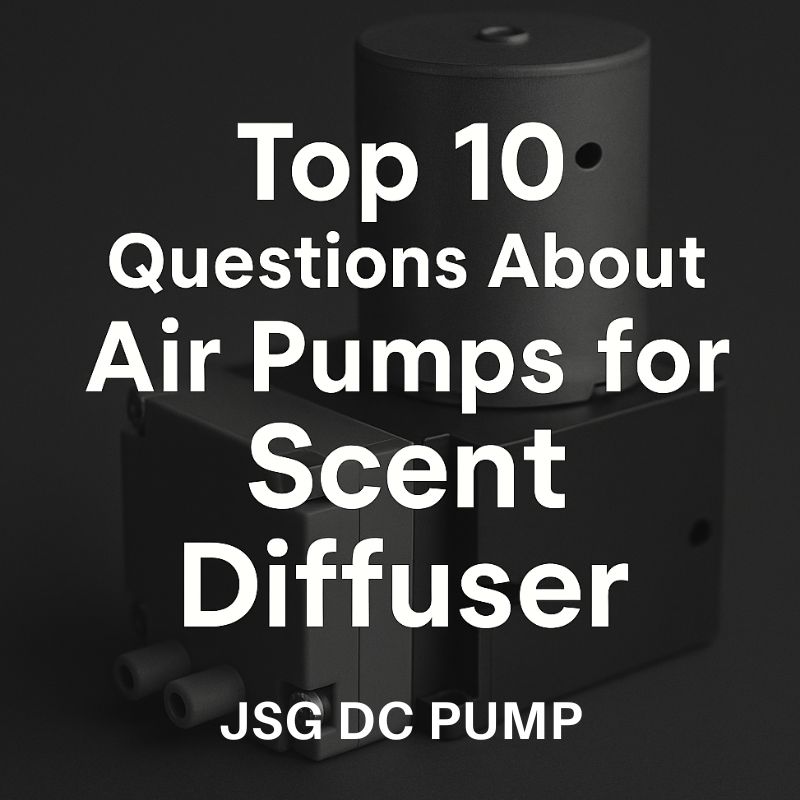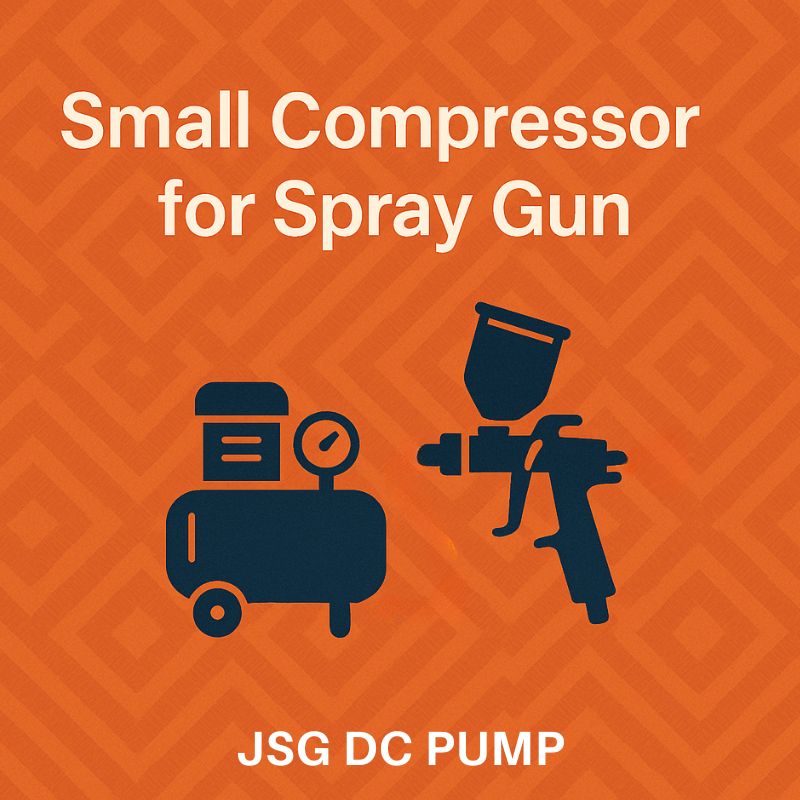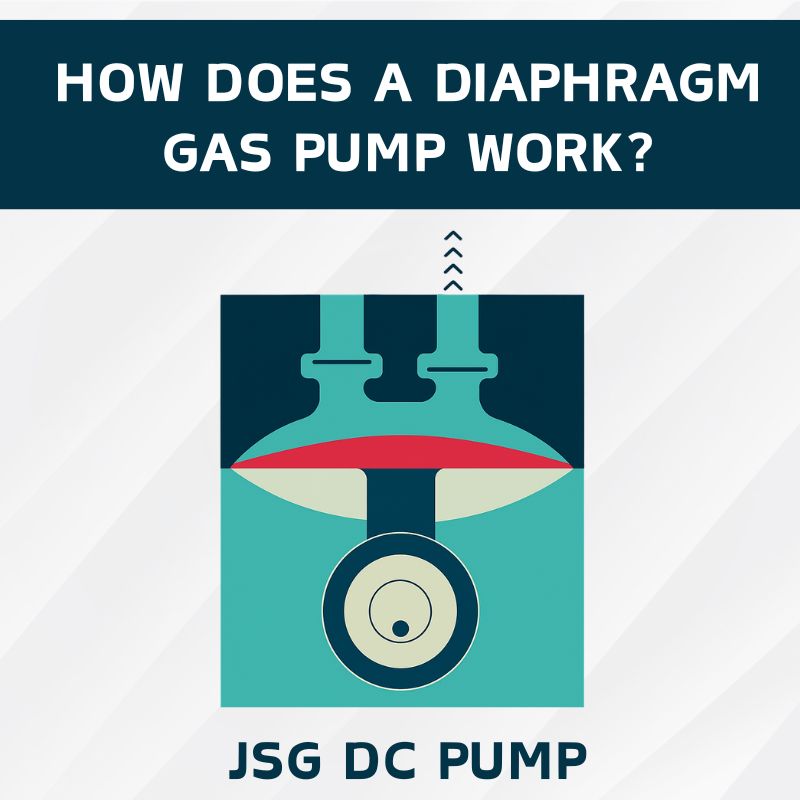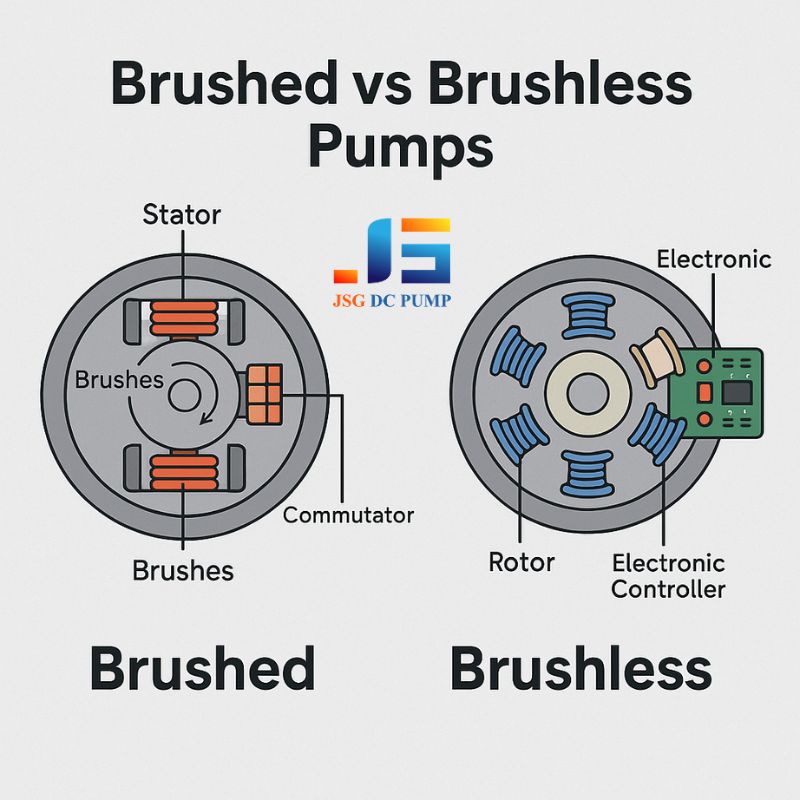Your new device has unique needs, but standard pumps don’t fit or perform correctly. You’re forced to compromise your design, risking market failure before you even launch.
OEM (Original Equipment Manufacturer) solutions are pumps we design and build for you to install in your final product. They can be customized in performance, size, materials, and electrical connections to perfectly match your specific application’s needs.
As an engineer at JSG DC PUMP, I’ve seen countless brilliant products come to life because of a custom pump solution. It’s often the missing piece of the puzzle that takes a product from “good” to “great.” An off-the-shelf component can work, but a truly optimized product requires components that are designed for it from the ground up. Let’s dive into what OEM really means and how it can be a game-changer for your next project.
What Is an OEM Pump Solution?
An OEM (Original Equipment Manufacturer) pump solution refers to a pump specifically designed or modified to meet the integration, performance, and regulatory needs of a particular client’s device or system.
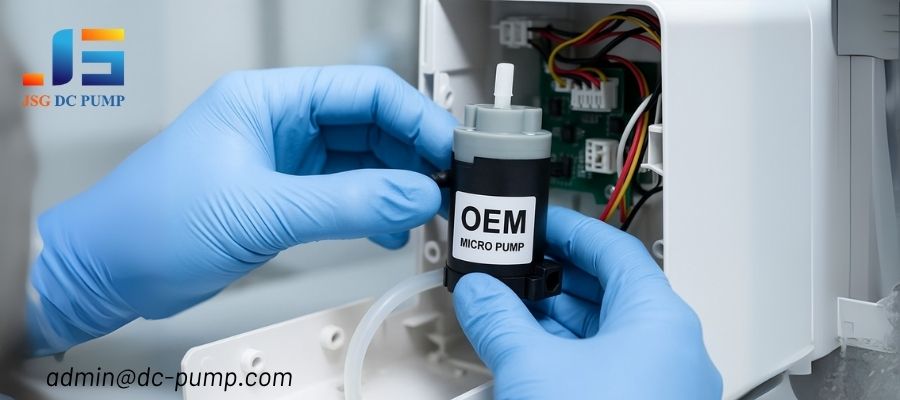
Unlike generic pumps that serve mass-market applications, OEM pumps are:
-
Custom-sized to fit space-constrained housings
-
Tuned for precise flow, vacuum, or pressure performance
-
Built with materials compatible with your media (air, liquid, or gas)
-
Designed for seamless control using your system logic (e.g., PWM, FG)
Whether you’re designing a wearable medical device or a desktop particle analyzer, an OEM pump helps ensure optimal operation, safety, and user experience.
What does OEM really mean in the world of pumps?
You hear the term “OEM” everywhere, but it can feel like confusing industry jargon. This uncertainty might prevent you from exploring a path that could unlock your product’s full potential.
OEM means we are the “Original Equipment Manufacturer” who makes the pump. You are the company that uses our pump as a component in your final product. It’s a partnership that gives you expert components.
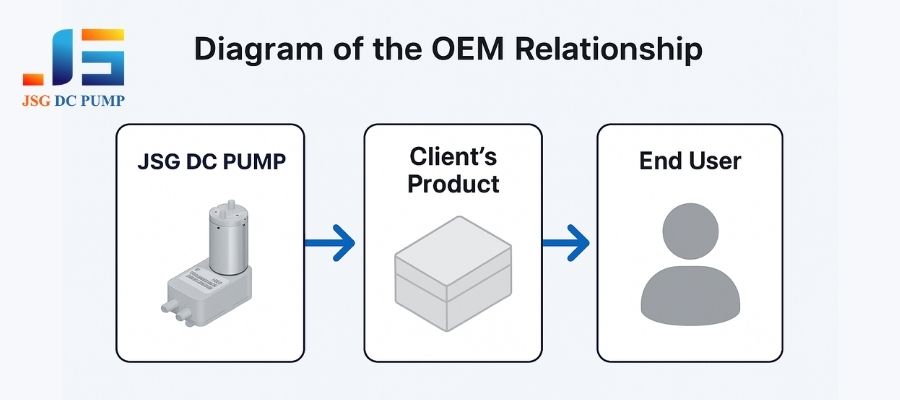
Diagram of the OEM Relationship
The concept is simpler than it sounds. You focus on designing and selling your amazing final product, and we focus on providing the perfect micro pump to power it. At JSG DC PUMP, we operate with a few different partnership models, and understanding them helps clarify the process. Our goal is to provide a flexible partnership that matches your project’s needs, whether you need a fully unique design or a modification of a proven one.
| Model | Design Ownership | Customization Level | Best For |
|---|---|---|---|
| OEM | The Client | Extremely High | Unique, high-volume products with very specific needs. |
| ODM | JSG DC PUMP | Moderate (branding, minor tweaks) | Faster time-to-market with proven, reliable designs. |
| OBM | JSG DC PUMP | None | Direct purchase of our standard, high-quality pumps. |
Why should you choose an OEM pump over a standard one?
Standard, off-the-shelf pumps are easy to find and buy online. But forcing one into your unique design leads to compromises on size, power, and noise, ultimately hurting your product’s quality.
Choose an OEM pump for perfect integration. It gives you optimized performance, a unique competitive advantage, and a reliable supply chain, ensuring your product isn’t compromised by a generic part.
The decision to go with a custom solution is a strategic one. It’s about refusing to compromise on the core function of your device. I’ve worked with clients who initially tried to use a generic pump. They spent months trying to design around its limitations: it was too loud for their medical device, too large for their portable appliance, or it consumed too much power for their battery-operated tool. An OEM solution solves these problems directly by optimizing performance, ensuring a perfect fit, and providing a secure supply chain for the life of your product. This direct partnership means your pump supply won’t be discontinued unexpectedly, forcing a costly redesign.
What kinds of customizations are actually possible?
The word “customization” sounds great, but it can be vague. You might not realize what you can change, assuming your unique requirement for a specific voltage or material is impossible to meet.
Nearly everything can be customized. We can adjust performance like pressure and flow, change the physical size and mounting points, select special materials for chemical compatibility, and modify electrical connectors.

This is where my job gets really exciting. A client comes to us with a challenge, and we get to be their problem-solver. The range of what we can modify is extensive. I once worked on a project for a portable environmental air sampler. The client needed a pump that was extremely quiet, ran on a specific battery voltage, and used Viton seals to resist the ozone it was sampling. A standard pump simply did not exist for this. We built a custom OEM solution from the ground up that checked every box. This level of detail is what partnership is all about.
| Customization Area | What We Can Change | Why It’s Important for You |
|---|---|---|
| Performance | Flow rate, pressure/vacuum level, power draw. | To match the exact needs of your task, maximizing efficiency and battery life. |
| Physical | Dimensions (L x W x H), mounting hole patterns, port locations & types. | To ensure the pump fits perfectly into your device, saving space and assembly time. |
| Materials | Diaphragm material (EPDM, Viton), valve material, pump head plastic. | For chemical compatibility with the gas or liquid being pumped, ensuring long life. |
| Electrical | Operating voltage (e.g., 3V, 5V, 12V, 24V), wire length, connector type. | To integrate seamlessly with your product’s power supply and control board. |
| Acoustics | Internal motor balancing, mounting grommets, housing design. | To minimize noise and vibration for sound-sensitive applications like medical devices. |
What Industries Rely on Our OEM Pump Solutions?
You might think custom pumps are only for one specific, high-tech field. This could make you overlook their broad applicability and how they could solve key challenges in your own industry.
Our OEM pumps are critical components across diverse industries, including medical, cosmetology, household appliances, automotive, and laboratory instrumentation, solving unique challenges in each and every one.
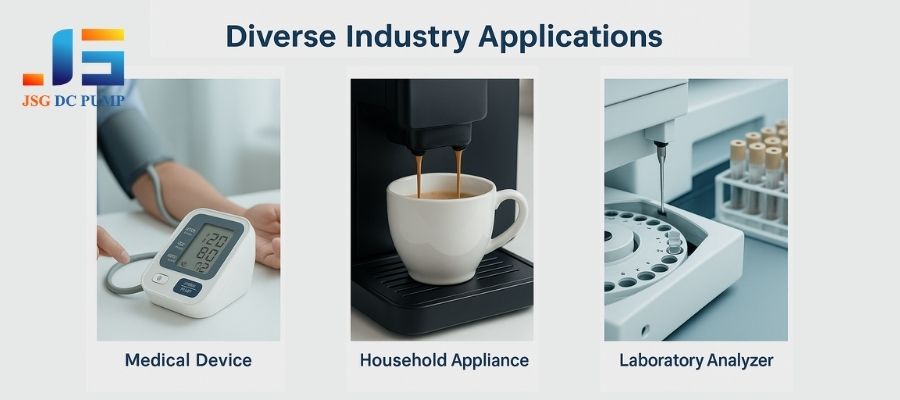
Our experience spans over two decades, and our pumps are trusted in devices all over the world. This breadth gives us unique insight into solving a wide range of fluidic challenges. A pump designed for the low-noise requirements of a medical device might have principles we can apply to a luxury home appliance. Our deep involvement in these fields means we likely already understand the specific standards and performance demands of your market.
- Medical & Health: For devices like blood pressure monitors, diagnostic equipment, and pneumatic therapy systems where reliability and low noise are paramount.
- Household Appliances: In smart coffee makers, robotic vacuums, and water dispensers where long life and consistent performance are expected.
- Laboratory & Instrumentation: For analyzers and sampling equipment requiring high precision and chemical resistance for aspirating and dispensing fluids.
- Automotive: In systems like adjustable lumbar support seats or headlight cleaning mechanisms that must withstand vibration and temperature extremes.
How do we support your OEM project from concept to mass production?
Starting an OEM project feels daunting. You might worry about a complex process, poor communication, and the risk of not getting the final product exactly right, which could cause major delays.
We guide you through a structured, transparent process from initial consultation and prototyping to testing and full-scale manufacturing. Our partnership ensures a smooth journey and a successful outcome for your product.
A successful OEM pump is built on a successful partnership. We’ve refined our process over thousands of projects to be as collaborative and efficient as possible. We don’t just take an order; we become an extension of your engineering team.
- Initial Consultation: We begin by listening. You tell us your goals, challenges, and requirements.
- Prototype Design & Selection: Based on your needs, we either suggest a modified ODM pump for speed or begin a full OEM design.
- Sample Testing & Validation: We provide prototypes for you to test in your actual device. This is the most critical step.
- Feedback & Iteration: We use your test data and feedback to make any necessary adjustments to the design.
- Tooling & Mass Production: Once the design is approved, we create the necessary tooling and scale up for smooth, consistent mass production.
What’s on our OEM Pump Selection Checklist?
You’re ready to start an OEM project but aren’t sure what information to provide. Coming to the first meeting unprepared can delay the start of the design and prototyping process.
Prepare key specifications before our first talk. Include your required flow and pressure, the fluid type, operating voltage, duty cycle, and expected lifespan. This accelerates the entire design process significantly.
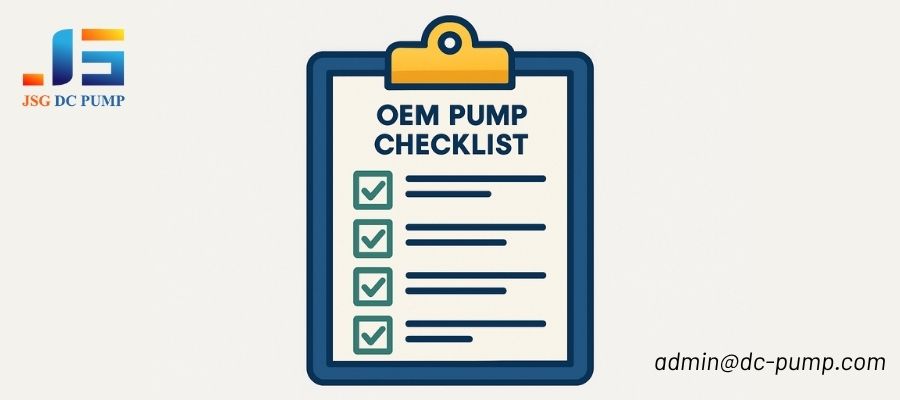
To help us find your perfect solution as quickly as possible, it’s best to gather some key data about your project. Having answers to these questions will give our engineering team a huge head start.
Key Performance Metrics:
- target flow rate (e.g., L/min)?
- What is the required pressure or vacuum level (e.g., kPa, psi)?
Operational Parameters:
- What is operating voltage (e.g., 12V DC)?
- Will the pump run continuously or intermittently (duty cycle)?
- What is the target operational lifespan (in hours)?
Physical and Environmental Constraints:
- What fluid will be pumped (air, water, a specific chemical)?
- What is the operating temperature range?
- What are the maximum size dimensions (L x W x H)?
- Is there a maximum noise level requirement (in dB)?
Have more questions about OEM pumps?
You still have some lingering questions that might be holding you back. Concerns about cost, lead times, or minimum order quantities are common and are important to address.
Key questions often involve minimum order quantities (MOQs), lead times for prototypes and production, and the overall cost structure. We can provide specific answers during our one-on-one consultation.
Here are answers to some of the questions I hear most often from new partners.
What is the typical Minimum Order Quantity (MOQ) for a custom pump?
This depends heavily on the level of customization. For a modified ODM pump, the MOQ can be relatively low. For a fully custom OEM pump that requires new tooling, the MOQ will be higher to make the investment viable. We work with you to find a practical solution.
How long does it take to get a prototype?
Again, it depends on the path. Samples of our existing ODM pumps can often be sent within a week or two. A modified prototype might take a few weeks. A brand-new OEM prototype that requires new molds and custom parts can take a few months.
Is an OEM pump more expensive?
Not necessarily. While there can be an initial non-recurring engineering (NRE) or tooling cost for fully custom designs, the per-unit price at production volume is often very competitive. When you factor in easier assembly, higher reliability, and better performance, the total cost of ownership is frequently lower than using a compromised standard part.
Let’s Build Your Next OEM Pump Together
With over a decade of experience in dc air pump, vacuum pump, liquid pump, diaphragm pump, piston pump, JSG DC PUMP is ready to help you transform your idea into a reliable, market-ready product.
Whether you need a quiet pump for a wearable medical device, a corrosion-resistant pump for air sampling, or a smart-controlled compressor for your automation project—we can deliver it.
📧 Contact: admin@dc-pump.com
🌐 Explore More: www.dc-pump.com
📞 Let’s Talk OEM Today


